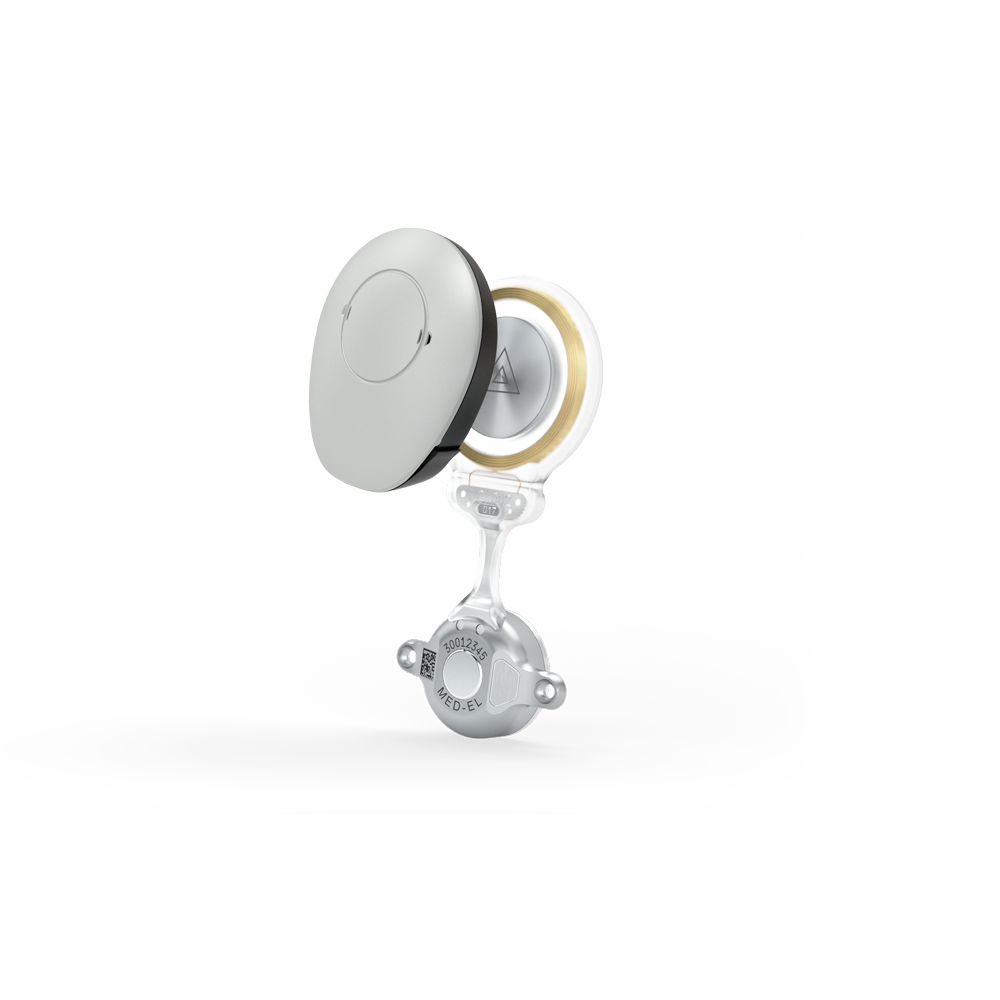
MED-EL
Published Nov 26, 2025
Microtia Ears: Definition, Causes, & Treatments
A microtia ear may just seem like an ear that looks different, but there’s actually a congenital condition behind it that can affect both hearing and quality of life. Sometimes microtia means having a tiny or unusually shaped ear; in other cases, it means being born with little to no external ear at all. But what exactly causes microtia, how is it diagnosed, and what treatments are available for people with no ears or underdeveloped ears?

In this article, we’ll look into the definition of microtia, the possible causes behind it, how it’s detected, and the treatment options that can help restore both function and confidence.
Overview
What Is Microtia?
Microtia is a congenital condition in which the external ear (also known as the pinna) is underdeveloped or absent. It can affect one or both ears and varies in severity. The condition is often associated with aural atresia, a condition in which the ear canal is missing or closed.
There are four recognized grades of microtia:
- Grade I: A slightly smaller ear with mostly normal features
- Grade II: A partially formed ear with a closed or narrow ear canal
- Grade III: A small, peanut-shaped ear with no ear canal (most common form)
- Grade IV: Complete absence of the external ear, also called anotia
Unilateral vs. Bilateral Microtia
Microtia can be categorized as unilateral microtia or bilateral microtia.
- Unilateral microtia affects only one ear and is the most common form as about 70-90% of microtia cases are unilateral. Many children with unilateral microtia still have normal hearing in their other ear, which helps them develop speech and language more easily.
- Bilateral microtia affects both ears and is less common but usually more complex. Children with bilateral microtia often experience greater hearing loss and may require early and more comprehensive treatment solutions, such as hearing implants.
Causes and Symptoms of Microtia
What Causes Microtia?
The exact cause of microtia is not always known, but it typically develops during the first trimester of pregnancy when the ear begins to grow. Possible causes include:
- Genetic factors
- Environmental influences
- Maternal diabetes
- Certain medications during pregnancy
In most cases, microtia is not inherited, though it can be associated with certain other genetic syndromes.
What Are the Signs and Symptoms of Microtia?
Microtia presents with a range of physical and auditory symptoms, which can vary depending on the severity of the condition.
Common signs include:
- A visibly small outer ear, skin tags or preauricular pits near the ear
- Absent or narrow ear canal (aural atresia /stenosis)
- Hearing loss in the affected ear(s)
- Speech issues in bilateral cases
- Difficulty with sound localization
In some cases, microtia is accompanied by other craniofacial abnormalities, eye or vertebral anomalies or airway issues, if part of a syndrome, making early diagnosis and the right support especially important for healthy development.
Diagnosis & Treatment
How Is Microtia Diagnosed?
The diagnosis of microtia is usually straightforward because the eternal ear malformation is visible at birth, but proper evaluation is still important in assessing disease severity and planning treatment
- Audiological testing: Evaluates hearing ability and identifies type and degree ofhearing loss
- CT scans: Provide detailed images of middle and inner ear structures to assess anatomical development
- Genetic testing: May be performed if microtia is suspected to be part of a broader syndrome
Early diagnosis is crucial for planning treatment and supporting hearing development.
What Are the Best Microtia Treatment Options?
Treatment for microtia depends on the severity of the condition and the individual needs of the patient. Options range from surgical reconstruction to non-invasive hearing solutions.
Hearing Solutions
In Microtia, the hearing loss is typically conductive due to canal atresia and middle ear malformations. The inner ear is rarely affected.
Early hearing intervention is critical, especially in bilateral cases. Following solutions could be considered:
Bone Conduction Hearing Aids like ADHEAR:
- Non-surgical
- A patent external ear canal is not needed
- Bypass the ear canal and transmit sound vibrations directly to the inner ear

ADHEAR
Discover More About ADHEARBone Conduction Implants like BONEBRIDGE:
- Fully implantable under the skin
- No open wound or daily skin care required
- SAMBA 2 external audio processor is magnetically attached to the implant
- Delivers natural sound while preserving skin integrity and ensuring long-term comfort and reliability

BONEBRIDGE
Discover More About BONEBRIDGEMicrotia Ear Surgery
Reconstructive surgery is a common solution for creating a new ear and is usually considered around 6-10 years, depending on method and rib cartilage maturity. Techniques include:
- Rib cartilage grafting: Using the patient’s own cartilage to sculpt a new ear
- Medpor implants: Ear structures made out of synthetic material and used for ear reconstruction
These procedures are typically performed in stages and require careful planning by a specialized surgical team.
Prosthetic Ear
For individuals who prefer a non-surgical option, a prosthetic ear can be custom-made to match the unaffected ear. A prosthetic ear is attached using adhesives or implants, and the cosmetic results are excellent.
Outlook and Prognosis if You Have Microtia
Living with microtia can present challenges, but with modern treatment options such as reconstructive surgery, prosthetic ears, or bone conduction hearing solutions, it is possible to achieve excellent cosmetic and functional outcomes.
Early intervention, especially for hearing loss, is key to supporting speech and language development. With the right care, microtia patients can thrive socially, academically, and professionally.
Solutions for Hearing Loss
Want to find out more about microtia and the available treatment options? Your local MED-EL team is ready to help you learn more about our hearing loss solutions.
Get in TouchReferences

MED-EL
Was this article helpful?
Thanks for your feedback.
Sign up for newsletter below for more.
Thanks for your feedback.
Please leave your message below.
Thanks for your message. We will reply as soon as possible.
Send us a message
Field is required
John Doe
Field is required
name@mail.com
Field is required
What do you think?
© MED-EL Medical Electronics. All rights reserved. The content on this website is for general informational purposes only and should not be taken as medical advice. Contact your doctor or hearing specialist to learn what type of hearing solution suits your specific needs. Not all products, features, or indications are approved in all countries.

MED-EL

MED-EL




